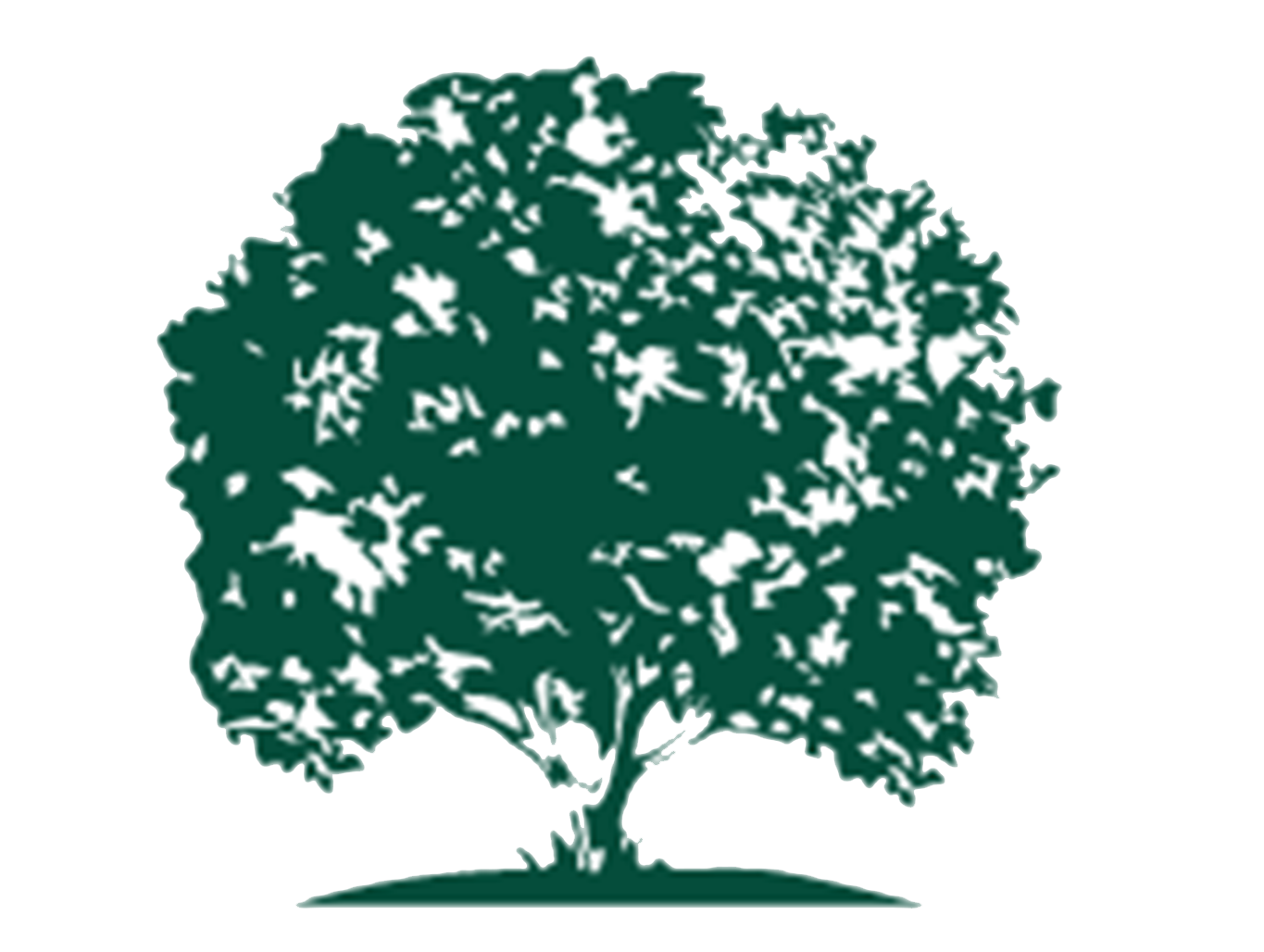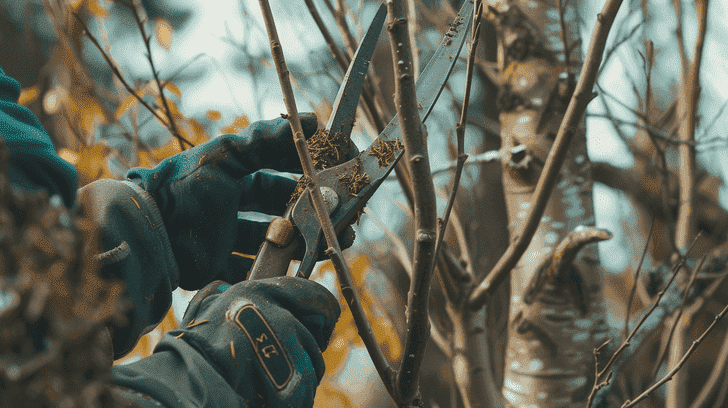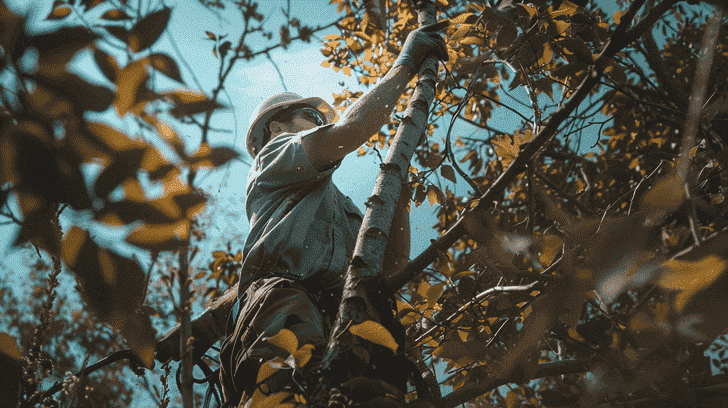DIY Tree Trimming Tools
When it comes to maintaining your trees, having the right tools can make a significant difference in the outcome of your efforts.
From pruning saws to pole pruners, each tool plays an essential role in ensuring your trees stay healthy and visually appealing. But how do you choose the best tools for your specific tree-trimming needs?
Let’s explore the world of DIY tree-trimming tools and uncover the secrets to achieving professional results right in your backyard.
Pruning Saws
Pruning saws are essential tools for DIY tree trimming, allowing for precise cuts and efficient branch removal. When using a pruning saw, keep these tips in mind:
- Blade Sharpening: Regularly sharpen the saw blade to guarantee clean cuts and efficient cutting.
- Branch Cutting: Position the saw close to the branch collar and make a cut outside the branch bark ridge for best tree health.
- Tree Maintenance: Use pruning saws to maintain tree health by removing dead or diseased branches.
- Limb Removal: Properly remove large limbs by making an undercut first to prevent bark from tearing.
Mastering these pruning techniques will help you effectively trim your trees while promoting their growth and health.
Pole Pruner
A Pole Pruner is a versatile tool for DIY tree trimming, allowing you to reach and cut branches that are higher up with ease.
When it comes to pole pruner maintenance, remember to keep the blades sharp and clean to guarantee efficient cutting.
Selecting the right pole pruner depends on the height of your trees and the thickness of the branches you need to trim.
Safety is paramount when using a pole pruner, so always wear protective gear and be mindful of your surroundings.
Compared to ladder trimming, a pole pruner offers greater stability and reach.
For those looking to enhance their pole pruner, consider DIY upgrades like adding a saw attachment or improving the grip for better control.
Pruning Shears
To effectively trim trees as a DIY enthusiast, one essential tool to have in your arsenal is a reliable pair of pruning shears. When using pruning shears, it’s important to employ proper pruning techniques to guarantee the health and aesthetics of your trees. Here are some key points to ponder:
- Pruning Techniques: Learn the correct way to prune different types of trees for best growth.
- Maintenance Tips: Keep your shears clean and sharp for efficient cutting.
- Proper Usage: Use the shears with the blade against the part to be cut for clean and precise cuts.
- Safety Measures: Always wear gloves and eye protection when using shears to prevent accidents.
Following these guidelines will enhance cutting efficiency and promote the well-being of your trees.
Anvil Pruner
When looking to expand your tree trimming toolkit, consider incorporating an anvil pruner for efficient and precise cutting. An anvil pruner is a versatile tool that requires proper care and maintenance for optimal performance.
To ensure longevity, clean the blades after each use and regularly oil the pivot point. When using an anvil pruner, remember to make clean cuts close to the trunk to promote healing.
Unlike bypass pruners, anvil pruners have a straight blade that crushes the stem against a flat edge, ideal for cutting dead wood.
To keep your anvil pruner sharp, use a sharpening stone to hone the blade.
The benefits of using an anvil pruner include increased cutting power and the ability to tackle thicker branches with ease.
| Anvil Pruner Care, Maintenance | Proper Anvil Pruner Technique |
| Clean blades after each use | Make clean cuts close to trunk |
| Regularly oil pivot point | Crushes stem against flat edge |
| Ideal for cutting dead wood |
AX
Consider incorporating an ax into your DIY tree trimming toolkit for efficient cutting of thicker branches and tree limbs.
An ax is a versatile tool that can aid in various tree care and branch maintenance tasks.
Here are a few reasons why adding an ax to your garden tools for outdoor projects can be beneficial:
- Versatile Cutting: An ax can handle a wide range of branch sizes, making it ideal for landscape design projects.
- Powerful Impact: The sharp blade of an ax delivers precise cuts with minimal effort, enhancing your tree care efforts.
- Enhanced Reach: With the long handle of an ax, you can access higher branches comfortably.
- Durable Construction: Quality ax models are built to last, ensuring longevity in your branch maintenance tasks.
Chainsaw
For efficient and precise tree trimming tasks, incorporating a chainsaw into your DIY toolkit is essential. Proper chainsaw maintenance is important for best performance. Regularly check the chain tension, lubrication, and cleanliness to guarantee safe operation.
Prioritize chainsaw safety by wearing protective gear, including gloves, goggles, and hearing protection. Mastering chainsaw operating techniques, such as proper cutting angles and limb removal, enhances efficiency and accuracy.
Periodic chainsaw blade sharpening is crucial for clean cuts and prolonging the tool’s lifespan. Remember to always follow manufacturer guidelines for maintenance and safety procedures to make the most of your chainsaw when tackling tree trimming projects.
Pruners
To effectively trim trees as a DIY enthusiast, pruners are indispensable tools that provide precision and control. When using pruners for tree trimming, keep in mind the following essential tips:
- Proper Technique: Always make clean cuts close to the trunk or main branch to promote quicker healing and reduce the risk of disease.
- Branch Angles: Cut branches at a slight angle just beyond the branch collar to aid in healing and prevent water accumulation.
- Tree Health: Regular pruning with pruners helps maintain tree health by removing dead or diseased branches, promoting new growth.
- Pruning Timing: Trim trees during their dormant season to minimize stress and maximize recovery.
Hedge Shears
When trimming trees as a DIY enthusiast, hedge shears serve as versatile tools that provide efficient cutting for shaping and maintaining hedges and shrubs.
To make certain you get the best results, it’s essential to use proper technique when using hedge shears. Make sure to cut branches at a slight angle to promote new growth and avoid leaving stubs.
Maintenance tips include regularly cleaning the blades to prevent sap buildup and keeping them sharp for clean cuts. Best practices involve trimming during the plant’s dormant season to minimize stress.
Common mistakes to avoid include cutting branches too close to the trunk and neglecting safety measures like wearing gloves and eye protection.
Hatchet
When using a hatchet for DIY tree trimming, make sure you maintain a firm grip and position yourself correctly to make accurate and controlled cuts. To guarantee efficient hatchet use, follow these guidelines:
- Hatchet maintenance: Regularly sharpen the blade and oil the hinge to keep it in peak condition.
- Efficient hatchet use: Utilize the hatchet’s weight to your advantage by letting it do the work rather than exerting excessive force.
- Tree trimming techniques: Aim for clean cuts at a slight angle to help the tree heal faster.
- Choosing the right hatchet: Select a hatchet with a comfortable handle length and weight that suits your strength.
For safety tips during hatchet tree trimming, always wear protective gear, maintain a clear workspace, and be mindful of where the hatchet blade is at all times.
Safety Equipment
For maximum safety during DIY tree trimming, make sure you have the necessary safety equipment at hand. Here is a handy table that outlines the essential safety gear you should have before starting your tree trimming project:
| Safety Equipment | |
| Safety goggles | Gloves |
| Hard hat | Harness |
| Ear protection | Knee pads |
| Respirator | Safety vest |
| First aid | Emergency plan |
Ensuring you have safety goggles, gloves, a hard hat, harness, ear protection, knee pads, a respirator, safety vest, first aid kit, and an emergency plan can greatly reduce the risks associated with tree trimming. Prioritize safety to enjoy a successful DIY tree trimming experience.
Loppers
To effectively trim trees as part of your DIY project, consider using loppers, which are essential tools for cutting branches with precision and ease. When using loppers, keep these key points in mind:
- Proper Technique: Make sure you’re using the correct cutting technique to avoid damaging the branch or the tree.
- Branch Angles: Cut branches at a slight angle to promote quicker healing and reduce the risk of water accumulation.
- Tree Health: Regular trimming with loppers promotes tree health by removing diseased or dead branches.
- Overgrown Limbs: Loppers are ideal for tackling overgrown limbs that are too thick for pruning shears but not large enough to require a saw.
Remember to check the lopper’s cutting capacity to ensure it can handle the branches you intend to trim.
Pole Saws
Consider utilizing a pole saw for your DIY tree trimming projects to efficiently reach and trim high branches with precision and ease. Pole saws are excellent tools for tree care and maintenance, allowing you to tackle branch cutting and limb trimming tasks with ease.
These arborist tools come in various lengths and styles, offering versatility for different tree trimming needs. Whether you’re shaping your trees or removing dead branches, a pole saw can help you achieve professional results without the need for a professional arborist.
Make sure to follow safety guidelines when using a pole saw, such as wearing appropriate protective gear and ensuring the tool is in good working condition before starting your tree maintenance tasks.
Hedge Trimmers
When looking to expand your DIY tree trimming toolkit, hedge trimmers offer a versatile and efficient option for shaping and maintaining your hedges and shrubs. Here are some essential tips to make the most of your hedge trimmers:
- Proper Technique: Always trim in a sweeping motion to guarantee a uniform cut.
- Maintenance Tips: Regularly clean the blades and lubricate moving parts to keep your trimmer in top condition.
- Choosing the Right Type: Select between corded, cordless, or gas-powered trimmers based on the size of your yard and the thickness of the hedges.
- Safety Guidelines: Wear protective gear, keep a safe distance from power sources, and never operate the trimmer with wet hands.
- Common Mistakes: Avoid cutting too deeply into the hedge, neglecting to sharpen the blades, or attempting to trim large branches beyond the trimmer’s capacity.
Wood Chipper
For efficient and safe tree trimming at home, incorporating a wood chipper into your DIY toolkit can greatly aid in managing branches and debris effectively. When it comes to wood chipper maintenance, regularly sharpening the blades and keeping the machine clean are essential for peak performance.
Prioritize wood chipper safety by wearing appropriate protective gear, following the manufacturer’s guidelines, and never putting hands near the feeding chute. Understanding wood chipper operation is key; feed branches slowly and in the right orientation to prevent jams.
During wood chipper selection, consider the size of branches you’ll be chipping and choose a model that suits your needs. Finally, for wood chipper disposal, consult local regulations or recycling centers for environmentally friendly options.
Safety Precautions for Tree Trimming
To guarantee your safety while tree trimming, always wear appropriate protective gear and inspect your tools before starting the task.
Here are some essential safety precautions to keep in mind:
- Proper ladder usage: Make sure the ladder is stable and on level ground before climbing.
- Eye protection: Wear safety glasses or goggles to prevent debris from getting into your eyes.
- Glove selection: Choose gloves that provide a good grip and protection against cuts and scratches.
- Power line safety: Be aware of overhead power lines and maintain a safe distance to avoid accidents.
Conclusion
Now that you have the right tools and knowledge for DIY tree trimming, remember: just like a well-maintained garden, regular tree maintenance is crucial to a healthy and beautiful landscape.
By investing in quality tools and following safety precautions, you can guarantee your trees thrive for years to come.
So grab your pruning shears and get to work – your trees will thank you for it!







